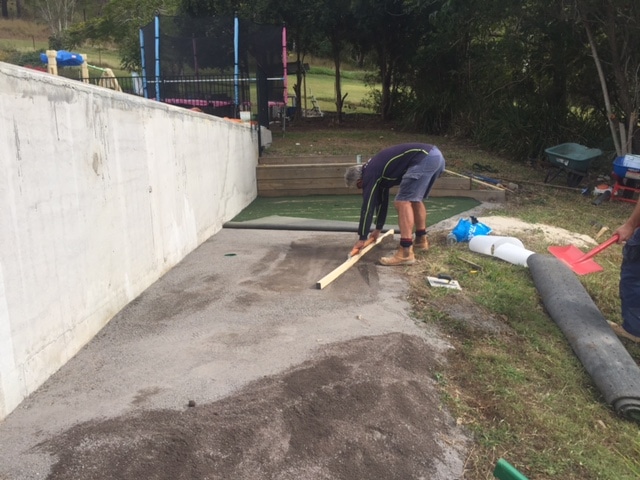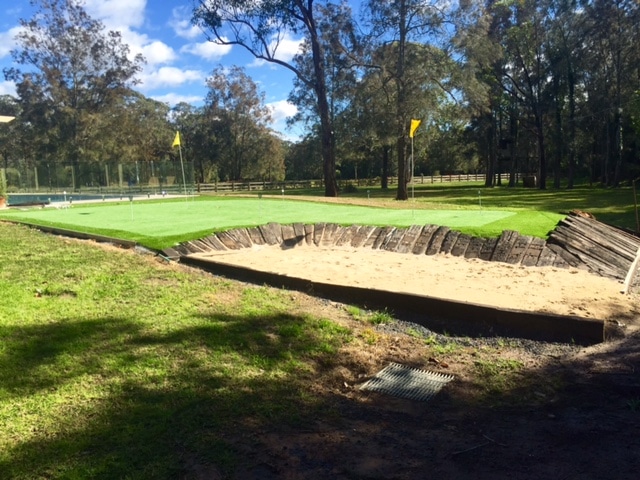What is the most important consideration for your synthetic golf green design? One area that our customers continually get wrong is the right amount of slope or break they want. In many instance golfers get this critical part wrong.
While it’s tempting to have lots of break and tiers and even large swales, the reality is that most synthetic golf greens are too small for anything too major. You need to keep things simple.
Time and again I have new clients asking for something radical. I always resist, saying, “Listen. You can have whatever you want, but if the slopes are too severe your green will be useless. The green will be too fast and you won’t be able to stop the ball near the hole. A complete waste of money”.
So what’s the solution?
Keep your synthetic golf green design flat. Doesn’t mean you have to have something dead flat. Just add a small amount of fall for drainage and your green will be perfect. You’re looking at around 1 to 2 degree of slope. It’s very hard to make things perfectly flat, so there will be plenty of natural variation with your design. And I can assure you your golf green will be plenty of fun to use and you’ll love it.
My first green was almost dead flat. At least, that was its appearance from the edge. When you actually putted, there was plenty of variation and enough interest to make putting fun and realistic. And this is the point: Your golf green design must be realistic. If it’s too fast or has too much break you won’t use it. So please keep the design nice and flat and don’t get too adventurous.
Are there any exceptions?
Yes. If you have the budget to build a green that’s over 300m2 then you can definitely add more slope and contour. The larger the golf green the more room you have to play with. But again, don’t overdo it. If you’re going to err, do so by making the green less severe rather than too great.
But my desired location is already on some sloping ground, what can I do?
You need to get the levels right from the start. This is why base preparation is so important. I was looking at a green site in Sydney last week, and the home owner wants the best possible green. This guy is keen to practice regularly and get his putting game in the best shape. But the location had a natural fall – way too much to simply clear the existing turf and lay the grass down.
Our prep work needs to factor this in. We are going to level two sections (at either end) and then step down the slope with a very small tier in the middle. This is the only way to ensure a great putting surface. And please hear me loud and clear. The tier is going to be subtle, only dropping 10cm or so. We will need to move a fair bit of dirt to make this happen and make sure the levels are all going to work.
If you have any doubt whatsoever then please contact us. We’re here to help and what to make sure you golf green design works for you and not against.



Comments are closed.